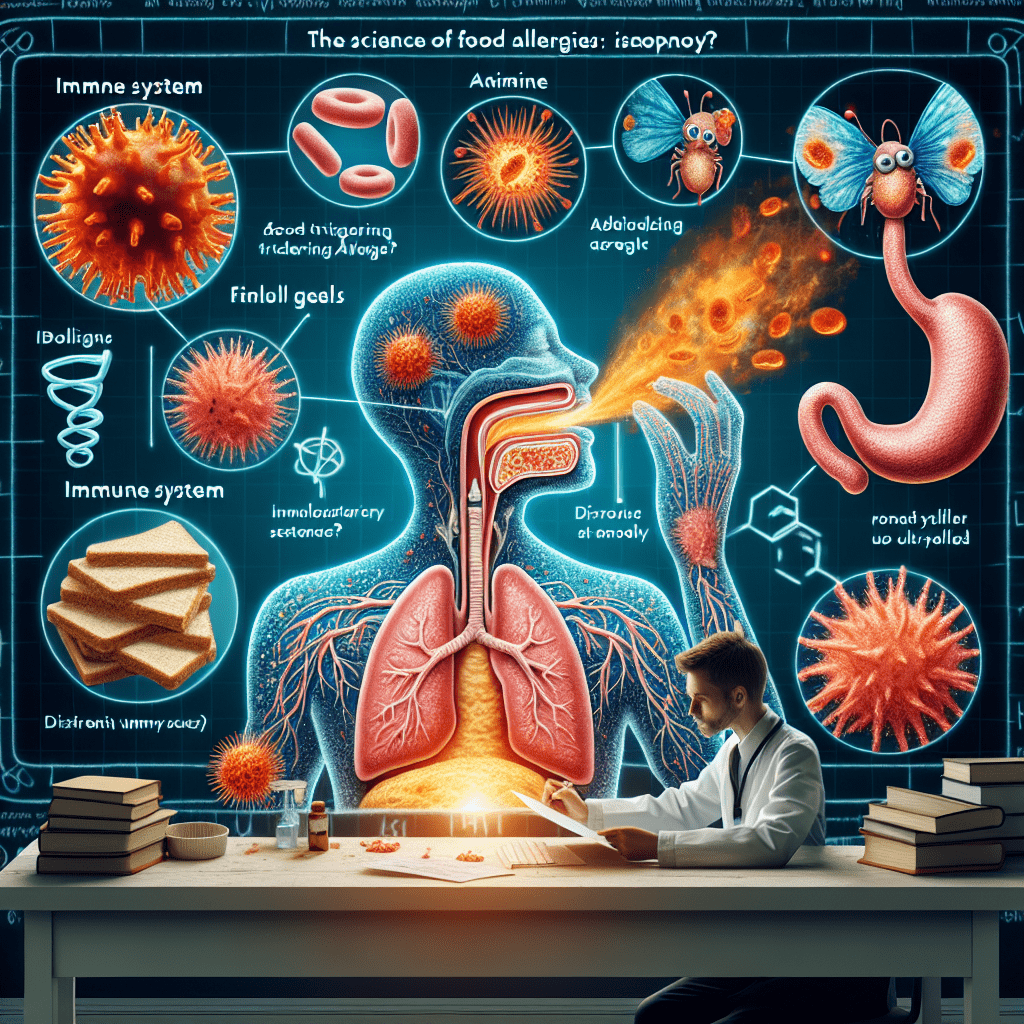[ad_1]
Food allergies involve a complex interplay between your body’s immune system and the foods you eat. Understanding the science behind food allergies can illuminate why certain foods trigger adverse reactions in some people but not others, and what happens inside your body when you are exposed to an allergen. This comprehensive guide dives into the cellular basis of food allergies, explaining the immunological processes and presenting key takeaways along with answers to frequently asked questions (FAQs).р>
Understanding Food Allergies
At the most basic level, a food allergy occurs when your immune system mistakenly identifies a harmless protein found in a food as a threat. This triggers a cascade of immune responses designed to protect the body, leading to the symptoms commonly associated with food allergies.
What Happens Inside Your Body?
When a susceptible individual ingests an allergenic food, the body’s immune system launches an attack against the perceived threat. The first step involves the production of Immunoglobulin E (IgE), a type of antibody specifically designed to combat the allergenic proteins. The IgE antibodies then bind to certain cells called mast cells and basophils scattered throughout the body, sensitizing them to the allergen.
Upon subsequent exposure to the allergen, these sensitized cells quickly recognize it and respond by releasing various inflammatory mediators like histamine. These chemicals are responsible for the symptoms of an allergic reaction, which can range from mild (such as hives or a runny nose) to severe (anaphylaxis).
Key Takeaways
- Food allergies are immune responses to harmless proteins in foods, mistakenly identified as threats.
- The production of IgE antibodies against specific allergens is central to developing food allergies.
- Mast cells and basophils release inflammatory mediators like histamine when re-exposed to the allergen, causing allergy symptoms.
- Understanding the mechanisms of food allergies is crucial for developing accurate diagnostic tools and effective treatments.
Frequently Asked Questions (FAQs)
Why do some people develop food allergies?
Genetics, environment, and exposure to allergens at an early age are factors that can predispose individuals to food allergies. The hygiene hypothesis also suggests that a lack of early childhood exposure to infectious agents, symbiotic microorganisms (such as the gut flora), and parasites increases susceptibility to allergic diseases by suppressing natural development of the immune system.
Can food allergies be cured?
Currently, there is no cure for food allergies. Management involves avoiding the allergenic foods, being prepared for accidental exposure, and treating symptoms if they occur. Research into desensitization and other treatments is ongoing.
How can I tell if I have a food allergy?
Diagnosing food allergies typically involves a combination of a medical history review, dietary review, skin prick tests, blood tests measuring IgE antibodies, and sometimes food challenges under medical supervision. If you suspect you have a food allergy, consulting with an allergist or immunologist is recommended.
Are food intolerances the same as food allergies?
No, food intolerances differ from food allergies in that they do not involve the immune system. Intolerances are generally less severe and can be caused by an inability to digest certain substances, such as lactose in dairy products. Symptoms are usually limited to gastrointestinal issues.
What are the most common food allergens?
The most common food allergens, often referred to as the “Big Eight,” include milk, eggs, fish, shellfish, tree nuts, peanuts, wheat, and soybean. These account for the majority of food allergy reactions.
For more information on managing food allergies and living a healthy life with dietary restrictions, visit the Food Allergy Research & Education (FARE) website.
[ad_2]

Leave a Reply